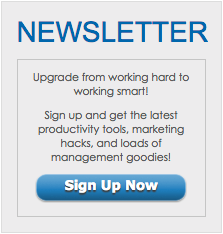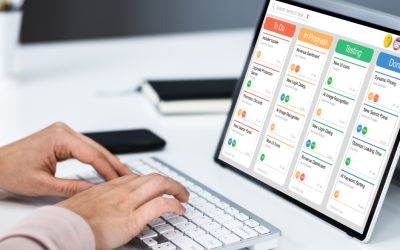Equipment failures continue draining facility budgets while disrupting daily operations across industries. With 69% of plants experiencing unplanned outages monthly, the traditional reactive approach isn’t cutting it anymore. Smart facilities are discovering that connecting scheduled maintenance with real-time asset tracking creates a powerful defense against costly breakdowns. This integration doesn’t just prevent failures. It transforms maintenance from a budget drain into a strategic advantage that drives profitability and operational excellence.
Understanding the Modern Maintenance Ecosystem
While maintenance challenges continue to drain facility budgets by up to 30% annually, the solution lies in understanding how integrated systems can transform these outdated approaches. Let’s explore the fundamental shift that’s revolutionizing maintenance operations across industries.
Traditional maintenance approaches relied heavily on calendar-based schedules or emergency repairs after equipment failed. Today’s facilities are embracing data-driven strategies that predict maintenance needs before problems occur. By leveraging maintenance work order software, organizations can capture real-time asset data and use it to develop proactive maintenance schedules, helping to anticipate and prevent breakdowns.
The shift from reactive to planned maintenance represents more than just a procedural change. It’s a fundamental rethinking of how facilities protect their assets. Modern systems integrate asset health monitoring with maintenance scheduling, creating a seamless workflow that prevents failures rather than responding to them.
Core Components of Integrated Maintenance Systems
Asset tracking technologies form the foundation of modern maintenance ecosystems. Sensors monitor everything from vibration levels to temperature fluctuations, feeding continuous data streams into centralized systems. The application of work order management software allows this information to be processed efficiently, with the software automatically generating maintenance tasks when specific thresholds are met.
Real-time data collection capabilities enable facilities to move beyond guesswork. When asset tracking systems detect anomalies, they trigger immediate alerts, allowing maintenance teams to address issues during planned downtime rather than during critical production periods.
This evolution toward predictive maintenance creates new demands for sophisticated technological infrastructure. Understanding the essential building blocks of these integrated systems is crucial for successful implementation.
Strategic Benefits of Connecting Scheduled Maintenance with Asset Tracking
With the technological foundation established, organizations can now harness measurable advantages that directly impact their bottom line. These strategic benefits demonstrate why leading companies are prioritizing integrated maintenance and asset tracking solutions.
Enhanced Equipment Reliability and Performance Metrics
Real-time asset health monitoring through integrated systems provides unprecedented visibility into equipment performance. When asset tracking data is seamlessly transferred into work order management systems, maintenance teams are empowered to notice performance declines well before a failure happens.
Performance benchmarking becomes automatic when systems continuously collect and analyze asset data. Maintenance managers can identify which equipment consistently operates at peak efficiency and which assets require more frequent attention, enabling targeted improvement strategies.
Cost Optimization Through Data-Driven Decision Making
Predictive maintenance can reduce maintenance costs by 5-10%, and this cost reduction comes directly from smarter resource allocation. Adopting an online work order system enables facilities to plan maintenance during scheduled downtime, mitigating the need for costly emergency repairs and excessive overtime labor.
Resource allocation becomes more strategic when maintenance decisions are based on actual asset conditions rather than arbitrary schedules. Maintenance teams can prioritize high-impact repairs while deferring less critical work, maximizing the value of every maintenance dollar spent.
Beyond improved reliability metrics, the real game-changer lies in how data-driven insights can slash maintenance budgets while maximizing asset performance. Smart cost optimization strategies emerge when maintenance decisions are powered by real-time asset intelligence.
Cost savings represent just the beginning of transformation—operational efficiency improvements create compounding benefits that reshape entire maintenance operations. These efficiency gains unlock productivity levels previously thought impossible in traditional maintenance environments.
Technology Integration: Modern Solutions for Maintenance Excellence
Understanding these strategic advantages naturally leads to the critical question: what specific technologies make this transformation possible? Modern maintenance excellence depends on seamlessly integrating cutting-edge solutions that work together as a unified ecosystem.
IoT-Enabled Asset Tracking Implementation
Sensor deployment strategies must consider both coverage and cost-effectiveness. Modern IoT sensors can monitor dozens of parameters simultaneously, but successful implementations focus on the metrics that matter most for each asset type.
Integration with existing maintenance management systems requires careful planning. For example, a work order system for maintenance should be configured to automatically process IoT data feeds and turn sensor readings into actionable tasks for maintenance staff.
AI-Powered Predictive Analytics in Maintenance Planning
While IoT sensors provide the foundation for comprehensive asset monitoring, artificial intelligence transforms this raw data into actionable maintenance intelligence. AI-powered systems take predictive capabilities to the next level by automatically generating maintenance recommendations.
Machine learning algorithms analyze historical patterns to predict optimal maintenance intervals for each piece of equipment. This approach moves beyond one-size-fits-all maintenance schedules to create customized maintenance plans based on actual equipment usage and performance data.
Even the most sophisticated AI predictions fall short without empowering field technicians with instant access to insights and work orders. Mobile-first solutions bridge the gap between intelligent planning and effective execution.
Implementation Strategies for Maximum ROI
Having explored the technological possibilities, successful organizations focus on strategic implementation approaches that maximize return on investment. A structured deployment strategy ensures technology adoption drives measurable business results rather than simply adding complexity.
Phase-Based Deployment Approach
Initial assessments establish baseline performance metrics before any system changes occur. This baseline becomes crucial for measuring improvement after implementation. Pilot programs should focus on high-impact assets where success can be easily measured and communicated.
Scalable rollouts across facility operations require careful change management. Starting with enthusiastic early adopters helps build internal momentum and creates success stories that encourage broader adoption throughout the organization.
Staff Training and Change Management
While phased implementation reduces risk and ensures system stability, sustainable success ultimately depends on people embracing new technologies. Comprehensive training programs transform potential resistance into enthusiastic adoption.
Technician onboarding for new work order maintenance software should emphasize practical benefits rather than technical features. When staff understand how these tools make their jobs easier and more efficient, adoption happens naturally.
Training prepares teams for change, but seamless integration with existing business systems eliminates operational silos that limit effectiveness. Strategic enterprise integration creates a unified maintenance ecosystem that enhances rather than disrupts current workflows.
Industry-Specific Applications and Case Studies
Beyond foundational implementation, emerging technologies are pushing the boundaries of what’s possible in maintenance and asset management. These advanced solutions offer glimpses into the future of facility operations.
Manufacturing Sector Implementation Success Stories
Production line asset tracking and maintenance coordination create significant competitive advantages in manufacturing environments. 45% of MRO professionals reported lower unplanned downtime, with many of these improvements resulting from the integration of maintenance with digital work order systems and asset tracking technologies.
Quality control integration with maintenance scheduling ensures that equipment performance issues don’t compromise product quality. When asset tracking systems detect performance drift, maintenance can be scheduled before quality problems occur.
Manufacturing success stories highlight production efficiency gains, while healthcare applications reveal how integrated maintenance directly impacts patient safety and regulatory compliance. Each sector presents distinct challenges that require specialized approaches.
Moving Forward With Integrated Maintenance Solutions
The connection between scheduled maintenance and asset tracking represents more than just technological advancement; it’s a fundamental shift toward proactive facility management. Organizations that embrace this integration don’t just reduce costs; they create competitive advantages through improved reliability and operational efficiency. The question isn’t whether to implement these systems, but how quickly you can start building this foundation for long-term success.
Common Questions About Maintenance and Asset Tracking Integration
What are the 4 pillars of asset management?
True success comes from seeing the big picture: managing people, performance, compliance, and capital, all under one roof. Watch our video summary to discover how the four pillars of asset management can elevate your property’s performance and protect its long-term value.
How quickly can facilities expect to see ROI from integrated systems?
Most facilities see measurable improvements within 3-6 months, with full ROI typically achieved within 12-18 months through reduced downtime and optimized maintenance schedules.
What’s the biggest challenge in connecting asset tracking with maintenance scheduling?
Data quality and system integration pose the greatest hurdles, but modern platforms are designed to handle diverse data sources and automatically clean incoming information.





